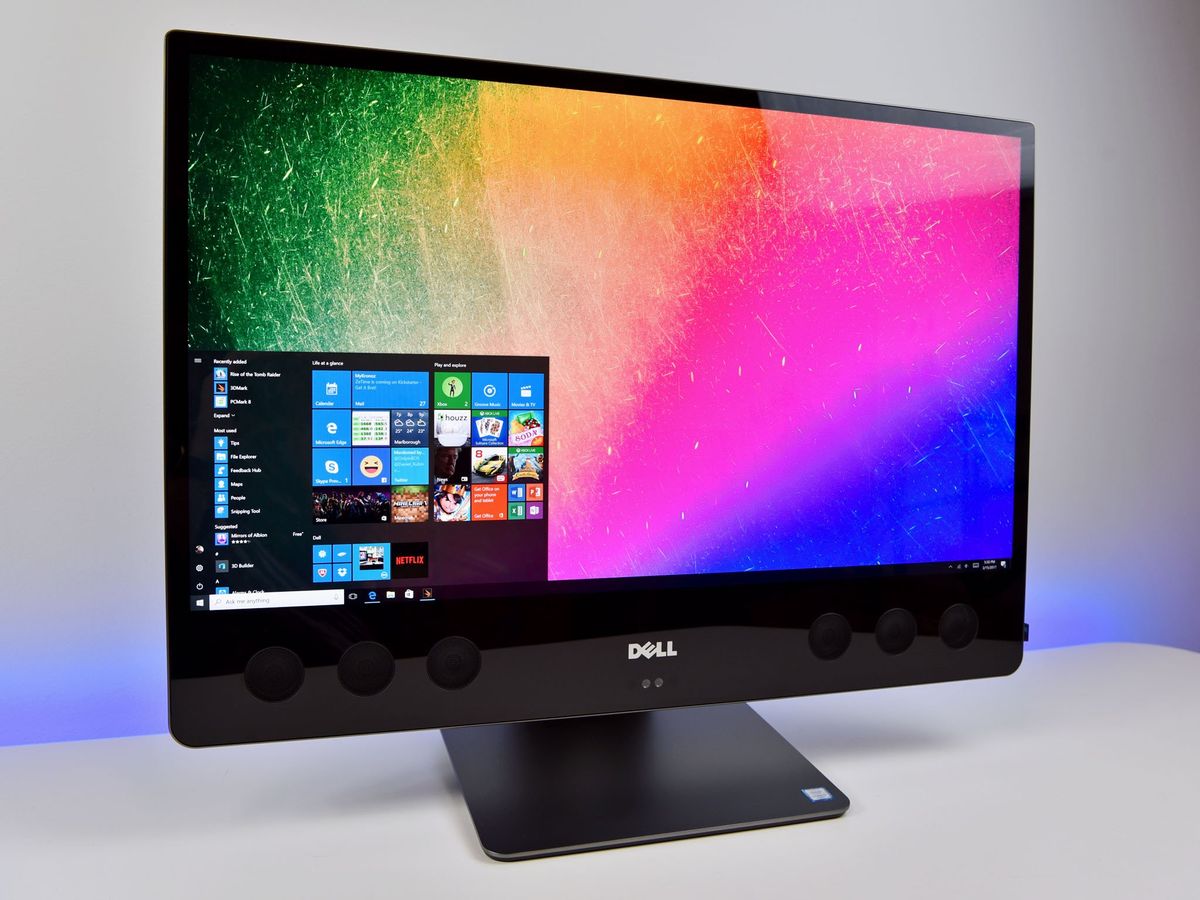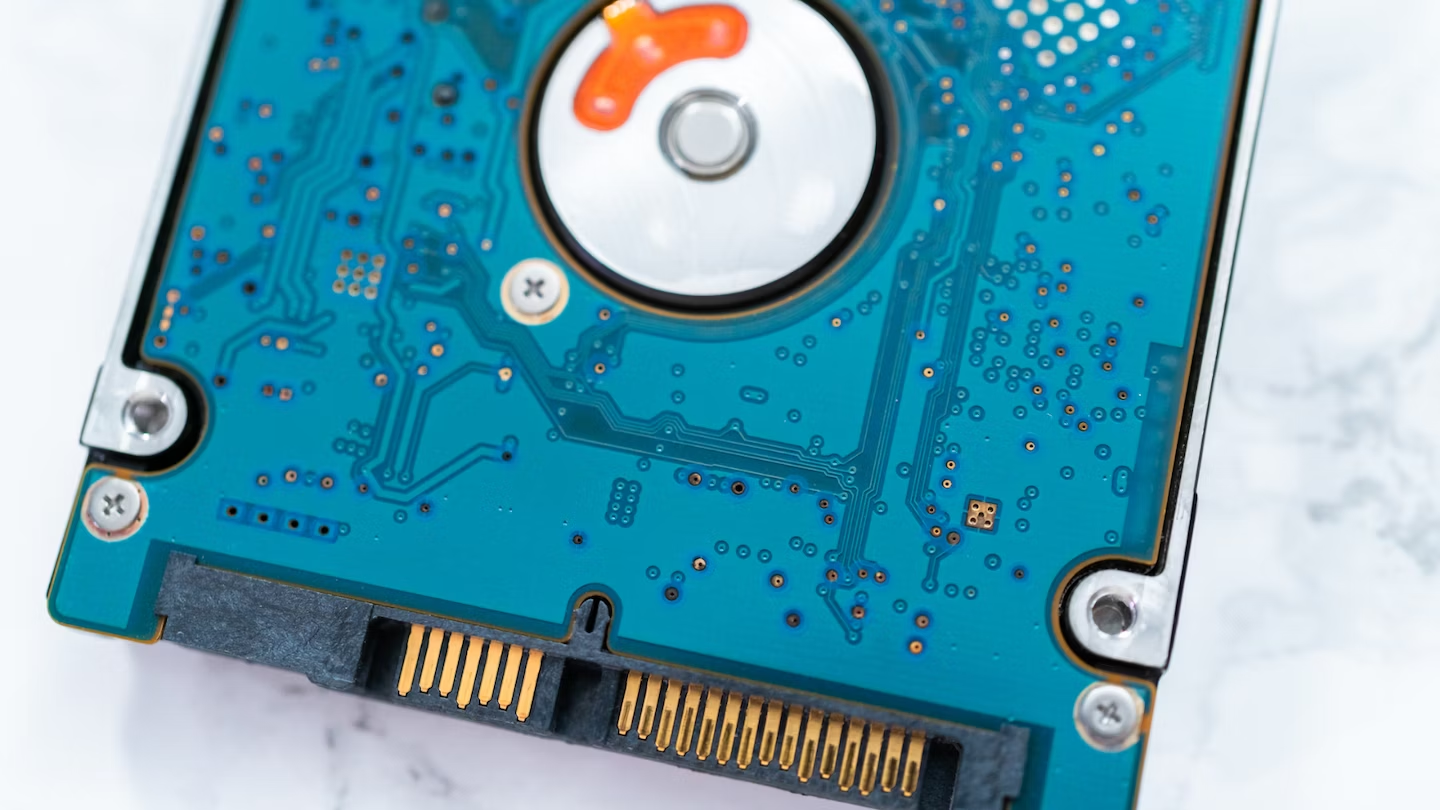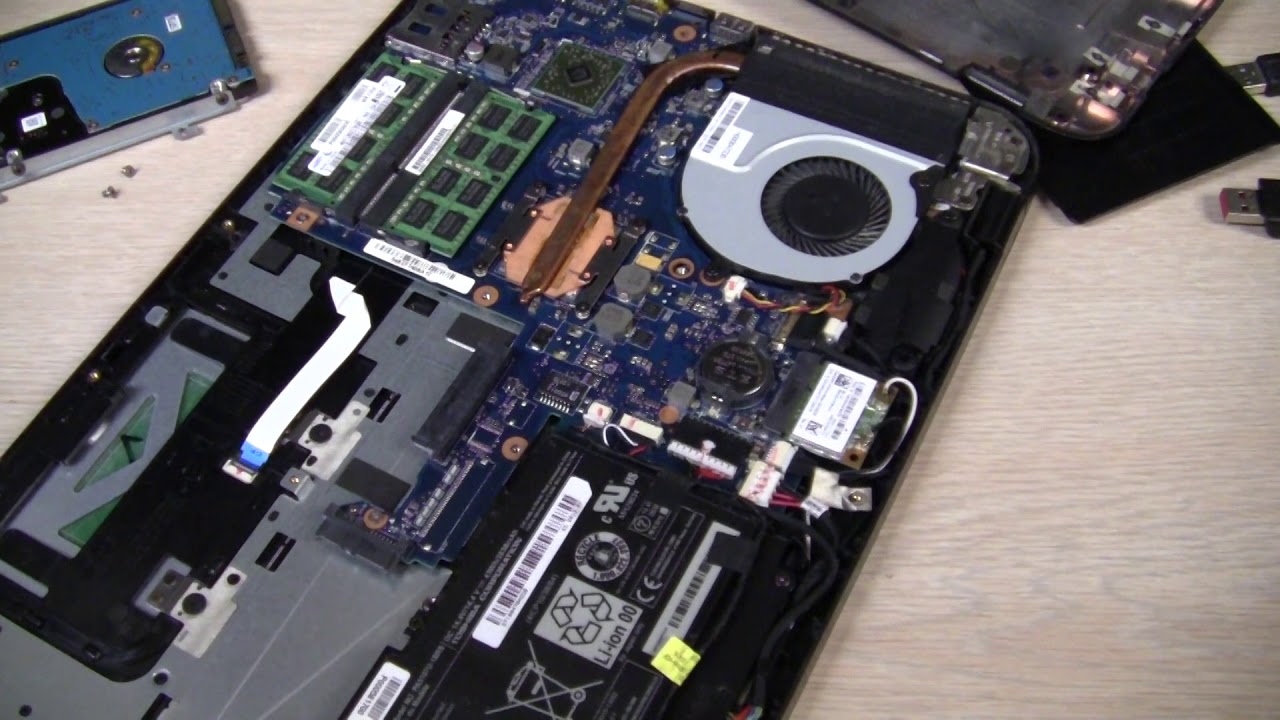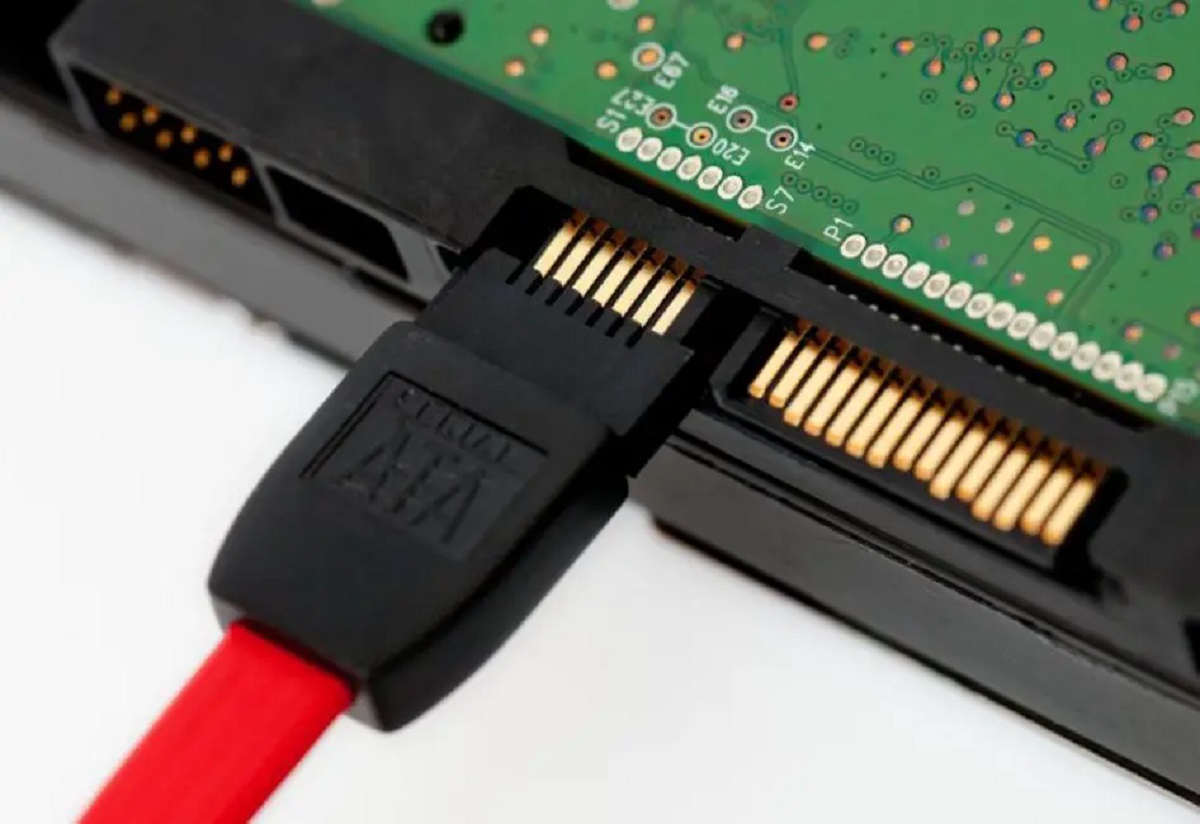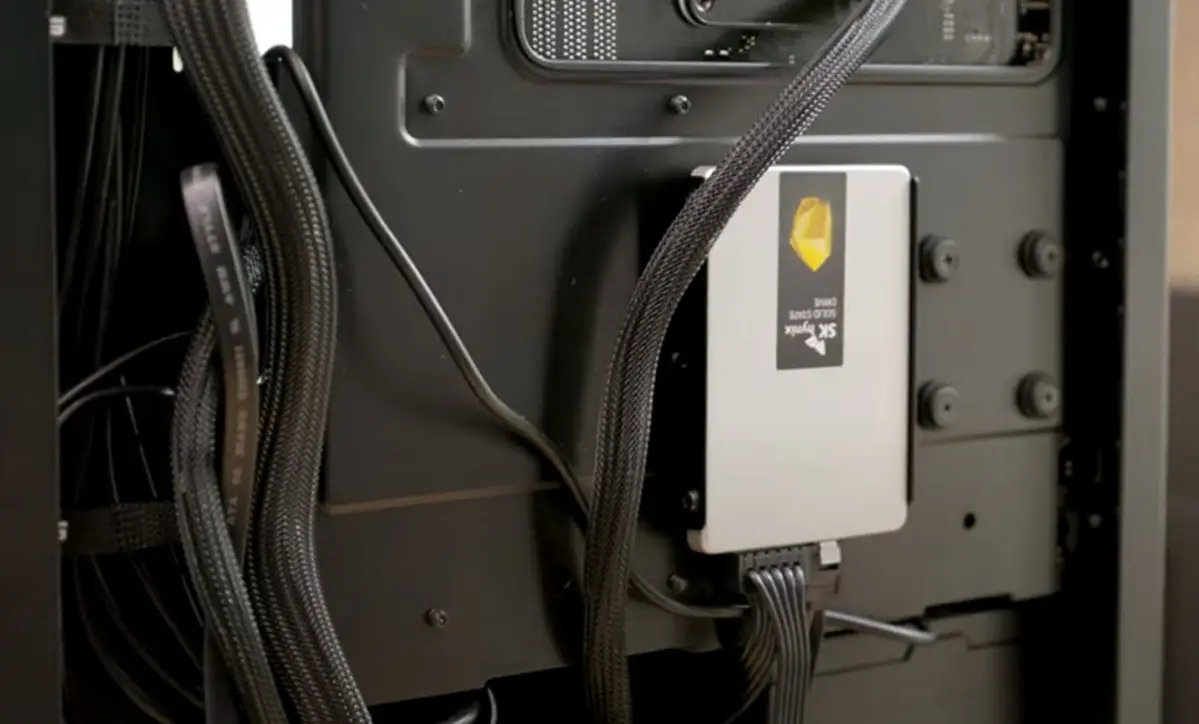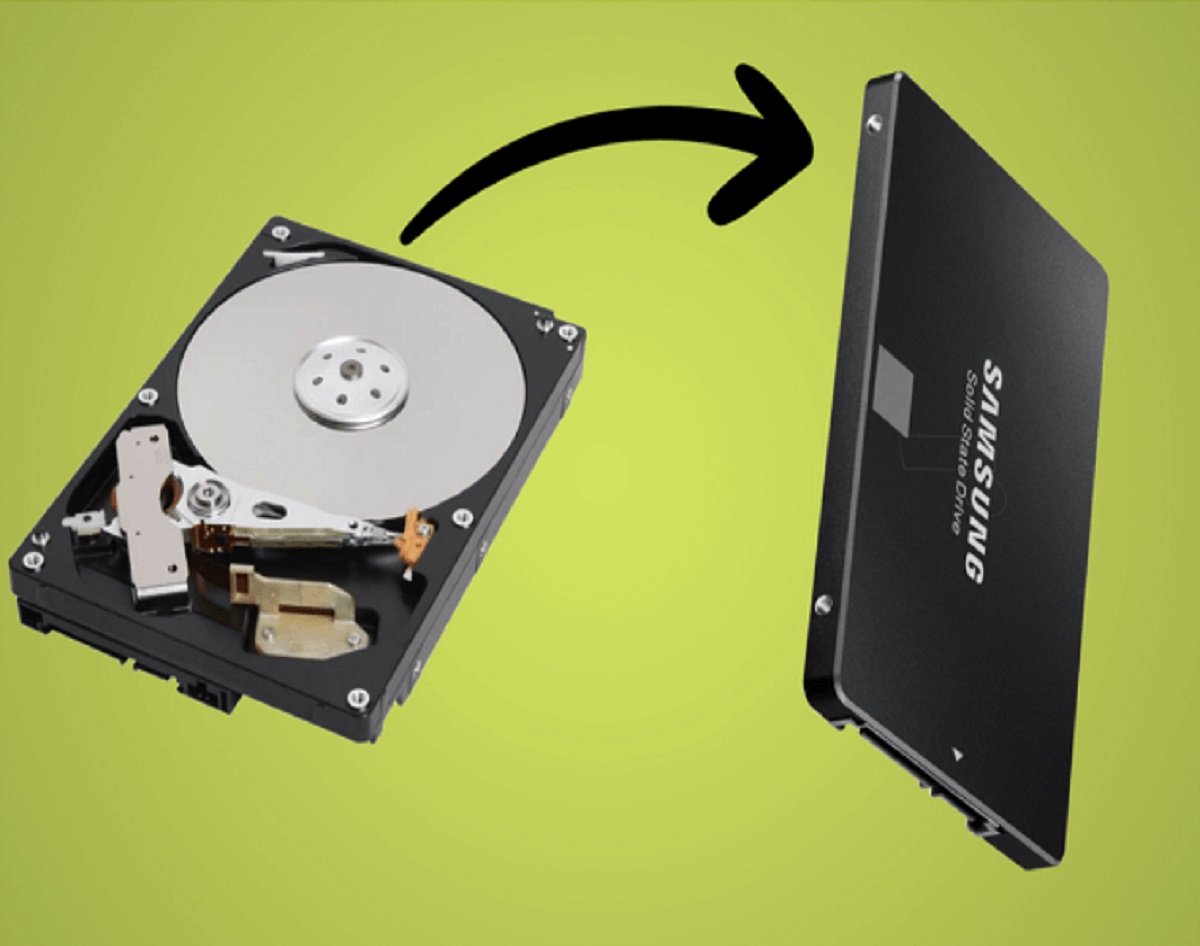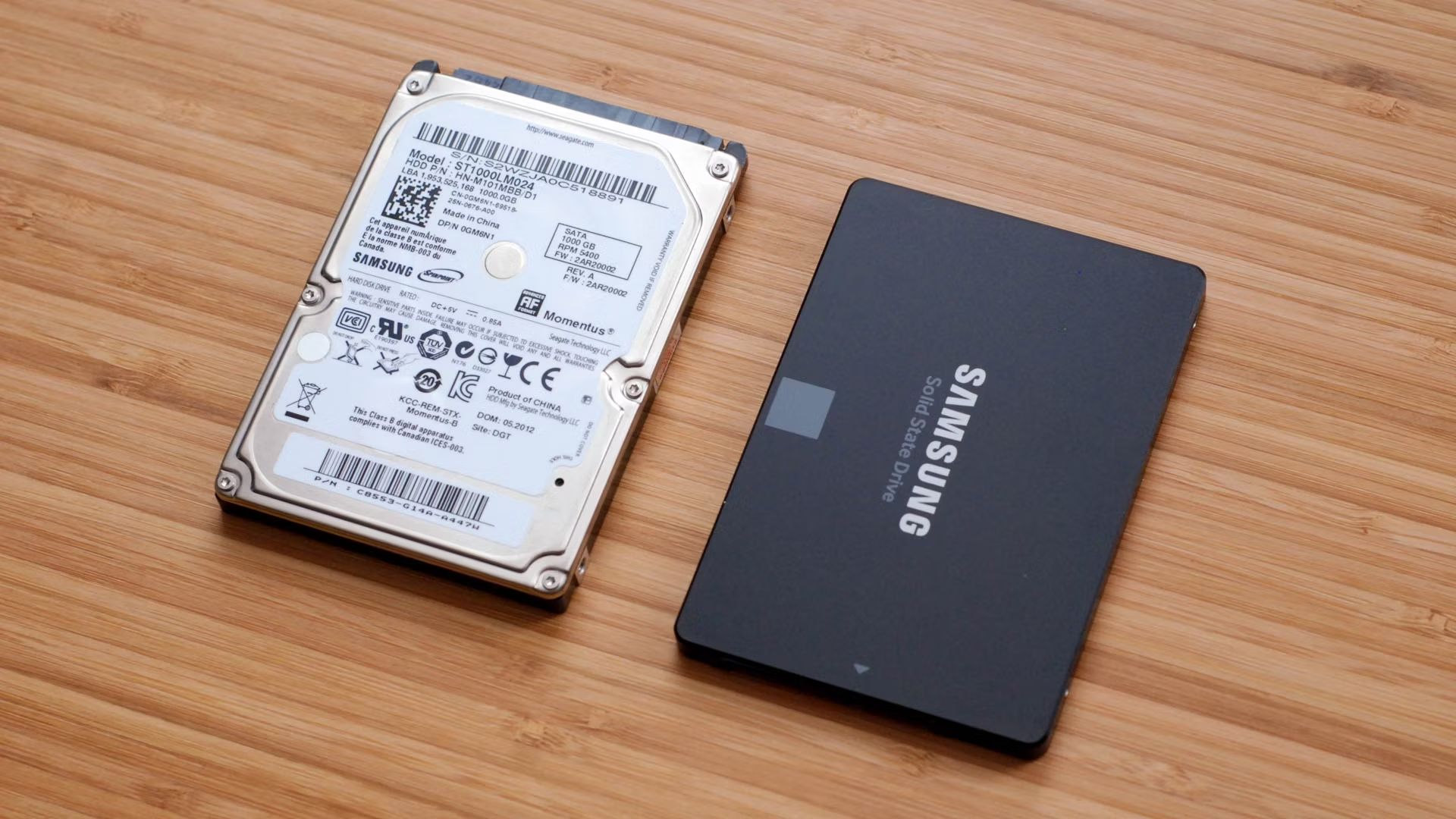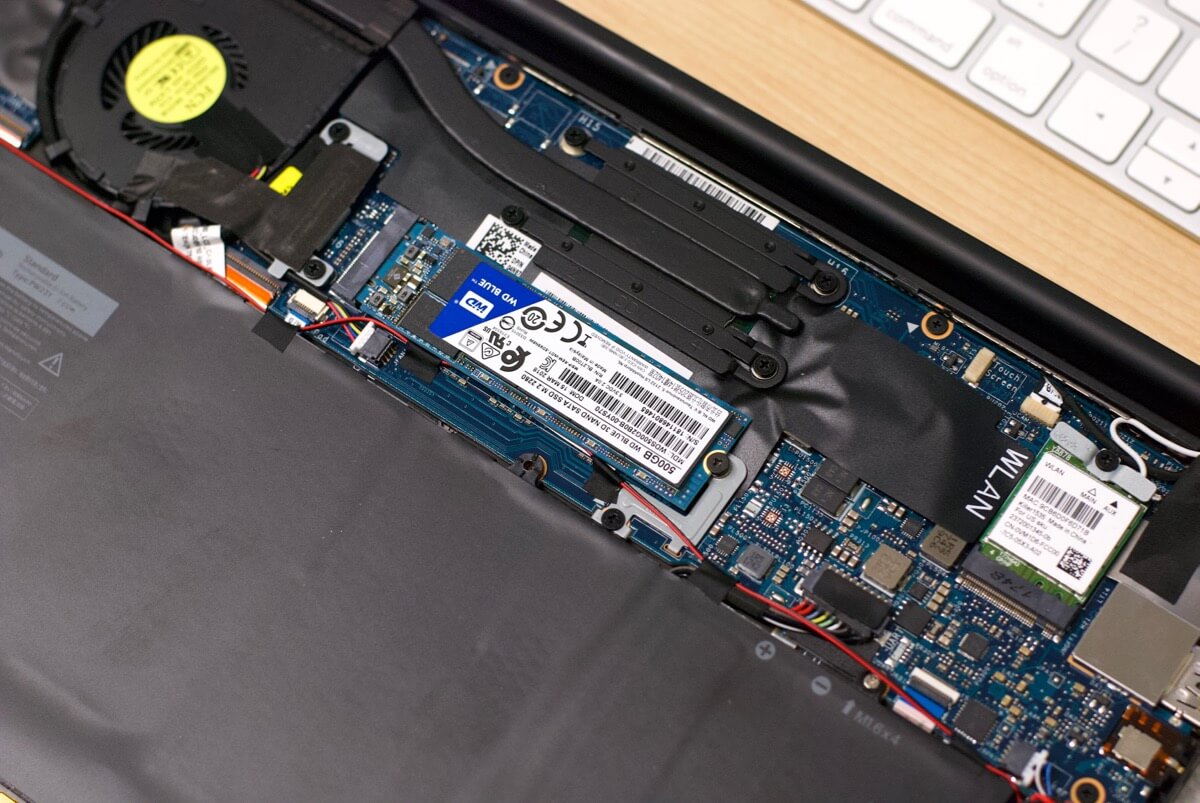Introduction
When it comes to connecting a solid state drive (SSD) to your computer, having the right cable is essential. Whether you’re looking to upgrade your existing storage or transfer data from an old drive, understanding the different cable options can help you make the right choice.
SSDs have revolutionized the storage industry with their faster read and write speeds, improved durability, and compact form factor. However, unlike traditional hard drives, SSDs require specific cables to ensure proper connection and compatibility with your computer.
In this article, we will explore the different types of cables used to connect an SSD to various devices. We will cover options for both internal and external connections, including SATA to SATA cables, SATA to USB adapter cables, M.2 to SATA adapter cables, M.2 to USB adapter cables, and Thunderbolt cables for Thunderbolt-enabled SSDs.
By understanding the different cable options available, you can determine which cable is most suitable for your specific needs. So, let’s dive in and discover the cables that will help you unlock the full potential of your SSD.
SATA to SATA Cable
A SATA to SATA cable is the most common and widely used cable for connecting an SSD internally to a desktop or laptop. This cable connects the SSD directly to the motherboard’s SATA port, allowing for data transfer and power delivery.
These cables are typically red in color and consist of two connectors: one for the SSD and one for the motherboard. The connectors are designed to fit securely into the corresponding ports, providing a stable and reliable connection.
One of the main advantages of using a SATA to SATA cable is its compatibility. SATA ports and cables are standardized, meaning they are widely supported by most modern motherboards and SSDs. Whether you have a 2.5-inch SATA SSD or a 3.5-inch SSD, a SATA to SATA cable can easily connect it to your computer.
Installation is straightforward and requires minimal technical knowledge. Simply connect one end of the cable to the SSD and the other end to an available SATA port on the motherboard. Ensure that the cable is securely plugged in to avoid any connection issues.
It’s important to note that SATA cables have a limited length, usually around 1 meter. Therefore, it’s essential to consider the distance between your SSD and the motherboard when choosing a cable length. If the distance is too far, you may need to use extension cables or opt for alternative connection methods.
SATA to SATA cables support data transfer speeds of up to 6 Gbps, which is sufficient for most SSDs available today. However, it’s worth noting that the actual speed will depend on the capabilities of your SSD and motherboard.
Overall, SATA to SATA cables provide a reliable and cost-effective solution for connecting your SSD internally. They are widely available, easy to install, and offer compatibility with a variety of SSDs and motherboards, making them a popular choice for both casual users and enthusiasts alike.
SATA to USB Adapter Cable
A SATA to USB adapter cable is a versatile solution for connecting an SSD externally to a computer or laptop. This cable allows you to connect your SSD to a USB port, enabling easy data transfer and accessibility.
Unlike the SATA to SATA cable, which connects the SSD directly to the motherboard, the SATA to USB adapter cable allows you to access your SSD as an external storage device. This is especially useful if you want to connect your SSD to multiple computers or if you need to access your data on the go.
The SATA to USB adapter cable has a SATA connector on one end, which connects to the SSD, and a USB connector on the other end, which plugs into a USB port on your computer. It also provides power to the SSD, eliminating the need for an additional power source.
One of the major advantages of using a SATA to USB adapter cable is its compatibility with different operating systems. Whether you’re using Windows, macOS, or Linux, these cables are typically plug-and-play, meaning you can simply connect the cable and start using your SSD without the need for any additional drivers.
Another benefit of using a SATA to USB adapter cable is the flexibility it offers in terms of portability. You can easily connect your SSD to a laptop or another computer via USB, allowing for easy data transfer and backup. This is especially useful if you need to retrieve important files or transfer data between devices.
It’s important to note that the performance of the SSD connected via a SATA to USB adapter cable may be limited compared to when it is connected internally. The USB interface typically offers lower data transfer speeds compared to the SATA interface. However, for most everyday tasks and regular usage, the performance difference may not be noticeable.
Overall, the SATA to USB adapter cable provides a convenient and versatile way to connect your SSD externally. It offers compatibility with multiple operating systems, easy portability, and eliminates the need for an additional power source. Whether you need to access your SSD on different devices or transfer data on the go, this cable is a practical solution for your needs.
M.2 to SATA Adapter Cable
An M.2 to SATA adapter cable is a specialized cable that allows you to connect an M.2 SSD to a SATA port on your motherboard. This cable is particularly useful when you want to install an M.2 SSD in a system that doesn’t have an M.2 slot or when you prefer the convenience of a SATA connection.
M.2 SSDs are becoming increasingly popular due to their compact size and high performance. However, not all computers or motherboards come with an M.2 slot. In such cases, an M.2 to SATA adapter cable can be a valuable solution.
The cable consists of an M.2 connector on one end, which securely connects to the M.2 slot on the SSD, and a SATA connector on the other end, which plugs into a SATA port on the motherboard. This allows for both data transfer and power delivery to the M.2 SSD.
One of the main advantages of using an M.2 to SATA adapter cable is flexibility. It allows you to take advantage of the high-speed performance of an M.2 SSD without being limited by the availability of an M.2 slot on your motherboard. This means you can easily upgrade your storage system without the need to replace your entire motherboard.
Installation of an M.2 to SATA adapter cable is relatively straightforward. Simply connect the M.2 end of the cable to the M.2 slot on the SSD, ensuring a secure connection. Then, plug the SATA end of the cable into an available SATA port on the motherboard. Once connected, the M.2 SSD will function as a regular SATA drive.
It’s worth noting that using an M.2 to SATA adapter cable may result in slightly slower speeds compared to a native M.2 connection. This is because the SATA interface has lower bandwidth compared to the PCIe interface commonly used with M.2 SSDs. However, for most applications and regular usage, the performance difference may not be significant.
Overall, an M.2 to SATA adapter cable provides a convenient and cost-effective solution for connecting an M.2 SSD to a motherboard without an available M.2 slot. It offers flexibility, allowing you to take advantage of the performance benefits of an M.2 SSD while avoiding the need for a motherboard upgrade.
M.2 to USB Adapter Cable
An M.2 to USB adapter cable is a handy accessory that allows you to connect an M.2 SSD to a computer or laptop via a USB port. This cable offers a convenient way to connect and access your M.2 SSD externally.
With the growing popularity of M.2 SSDs, having the ability to connect them externally can be advantageous. An M.2 to USB adapter cable provides the versatility and mobility to use your M.2 SSD on different devices, transfer data, and access files with ease.
The cable typically has an M.2 connector on one end, which securely plugs into the M.2 slot on the SSD, and a USB connector on the other end, which connects to a USB port on your computer. It also provides power to the SSD, eliminating the need for an external power source.
An M.2 to USB adapter cable offers plug-and-play functionality, making it compatible with various operating systems, including Windows, macOS, and Linux. Simply connect the cable between the M.2 SSD and the USB port, and your computer will recognize the SSD as an external storage device.
One of the main advantages of using an M.2 to USB adapter cable is the portability it offers. Unlike connecting an M.2 SSD internally or using a SATA to USB adapter cable, the M.2 to USB adapter cable allows you to easily move and use your M.2 SSD on different devices. This is particularly useful when you want to access your data on the go or when upgrading multiple computers.
It’s important to note that the performance of the M.2 SSD connected via a USB interface may be slightly lower compared to a native M.2 connection. This is due to the limitations of the USB interface, which typically provides slower data transfer speeds compared to the PCIe interface used with M.2 SSDs. However, for most everyday tasks and regular usage, the performance difference may not be significant.
Overall, an M.2 to USB adapter cable provides a convenient and portable solution for connecting an M.2 SSD externally. It offers compatibility with different operating systems, easy plug-and-play functionality, and eliminates the need for an external power source. Whether you’re transferring files, accessing data on multiple devices, or upgrading your storage system, this cable is an excellent choice for your M.2 SSD connectivity needs.
Thunderbolt Cable (for Thunderbolt-enabled SSDs)
A Thunderbolt cable is a high-speed data transfer cable specifically designed for Thunderbolt-enabled devices, including Thunderbolt-enabled SSDs. Thunderbolt technology provides an incredibly fast and versatile connection, allowing for lightning-fast data transfer and the daisy-chaining of multiple devices.
Thunderbolt cables come in two main connector types: Thunderbolt 2 and Thunderbolt 3. While Thunderbolt 2 uses the Mini DisplayPort connector, Thunderbolt 3 uses the USB-C connector. It’s essential to use the appropriate cable for your Thunderbolt-enabled SSD based on the connector type supported by your device.
When it comes to data transfer speeds, Thunderbolt cables are unparalleled. Thunderbolt 2 offers transfer speeds of up to 20 Gbps, while Thunderbolt 3 supports speeds of up to 40 Gbps. This makes Thunderbolt the preferred choice for professionals and power users who require lightning-fast data transfer for demanding tasks, such as video editing and 3D rendering.
In addition to its speed, Thunderbolt technology also supports power delivery, allowing Thunderbolt-enabled SSDs to receive power through the cable. This eliminates the need for additional power cables or adapters when connecting your Thunderbolt-enabled SSD to a compatible device.
Another advantage of Thunderbolt cables is their ability to daisy-chain multiple devices. With Thunderbolt technology, you can connect multiple Thunderbolt-enabled devices in a series, creating a streamlined and efficient workflow. For example, you can connect an external display, a Thunderbolt-enabled SSD, and other peripherals, all through a single Thunderbolt cable.
It’s important to note that Thunderbolt cables are not compatible with all devices. To utilize Thunderbolt technology, both the device and the computer must have Thunderbolt-enabled ports. However, Thunderbolt 3 ports are backward compatible with USB-C, which offers additional flexibility when connecting to devices that don’t support Thunderbolt.
Overall, Thunderbolt cables offer a powerful and versatile solution for connecting Thunderbolt-enabled SSDs. With their lightning-fast data transfer speeds, power delivery capabilities, and the ability to daisy-chain multiple devices, Thunderbolt cables are the go-to choice for professionals and enthusiasts looking to maximize the performance of their Thunderbolt-enabled SSDs.
Conclusion
Choosing the right cable to connect a solid state drive (SSD) is crucial for ensuring proper functionality and compatibility with your computer or laptop. With the variety of cables available, including SATA to SATA cables, SATA to USB adapter cables, M.2 to SATA adapter cables, M.2 to USB adapter cables, and Thunderbolt cables for Thunderbolt-enabled SSDs, you have several options to suit your specific needs.
SATA to SATA cables are the most common choice for connecting an SSD internally. They offer compatibility, ease of installation, and reliable performance. SATA to USB adapter cables, on the other hand, provide convenience and portability, allowing you to connect your SSD externally to multiple devices. M.2 to SATA adapter cables offer flexibility by enabling you to connect an M.2 SSD to a SATA port on your motherboard when an M.2 slot is not available. Finally, M.2 to USB adapter cables provide versatility and mobility, allowing you to connect your M.2 SSD externally via a USB port.
For those with Thunderbolt-enabled SSDs, Thunderbolt cables offer lightning-fast data transfer speeds, power delivery capabilities, and the ability to daisy-chain multiple devices. Thunderbolt technology provides a powerful and efficient connection for professionals and power users who require high-performance storage solutions.
When choosing a cable, consider the specific requirements of your SSD and your computer. Ensure that the cable is compatible with your SSD’s interface, whether it’s SATA, M.2, or Thunderbolt. Additionally, consider the length and flexibility you require for your setup, whether it’s an internal or external connection.
By understanding and using the appropriate cable for your SSD, you can maximize its performance and enjoy seamless data transfer and storage capabilities. Consider your specific needs and choose the cable that best suits your requirements. With the right cable, you can unlock the full potential of your SSD and enhance your computing experience.









